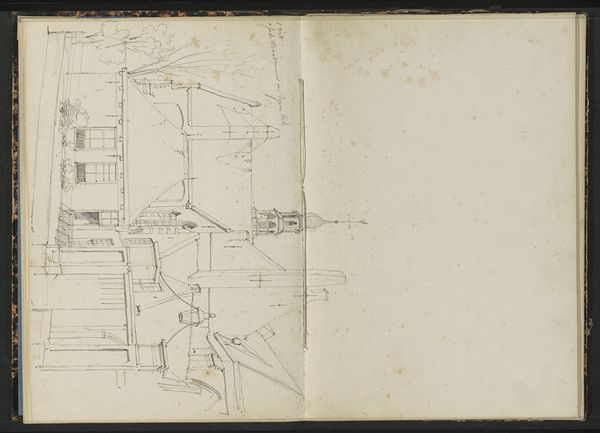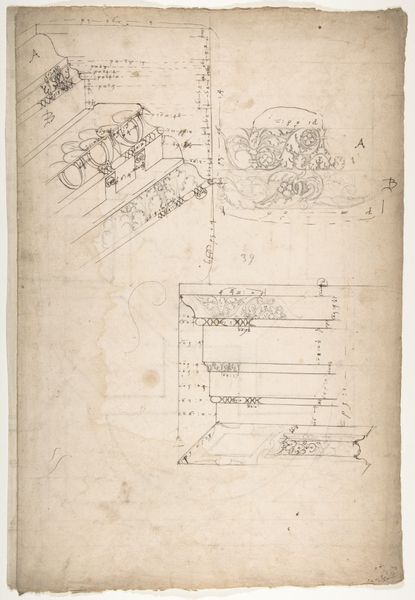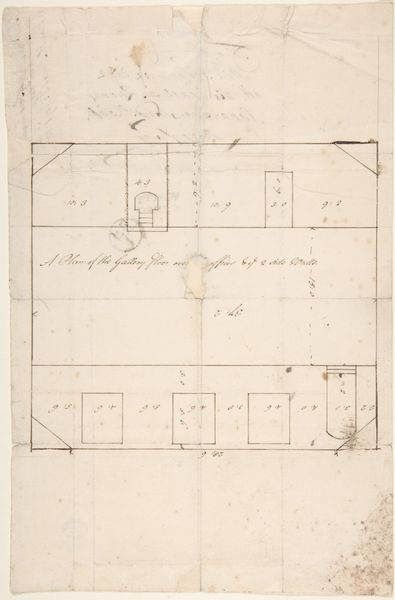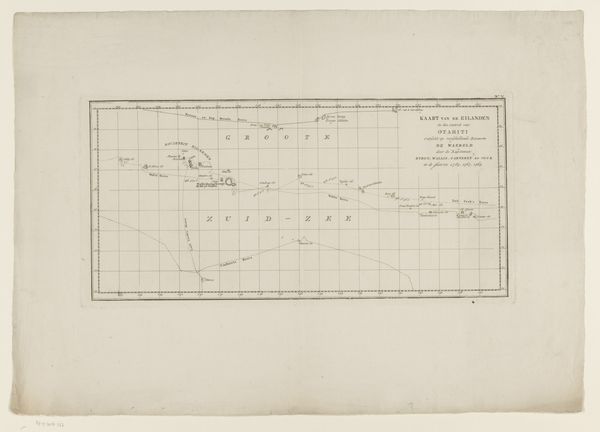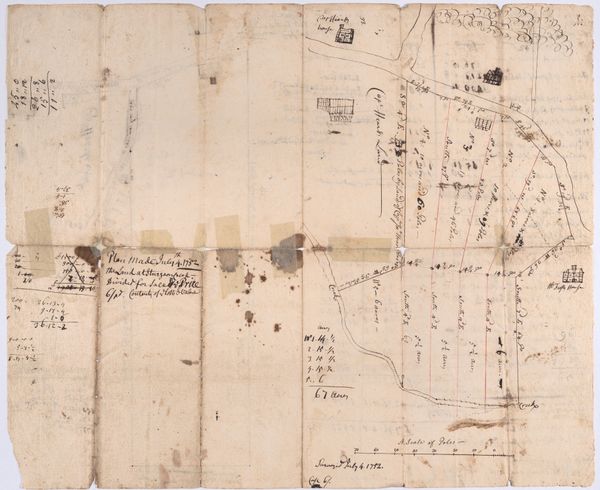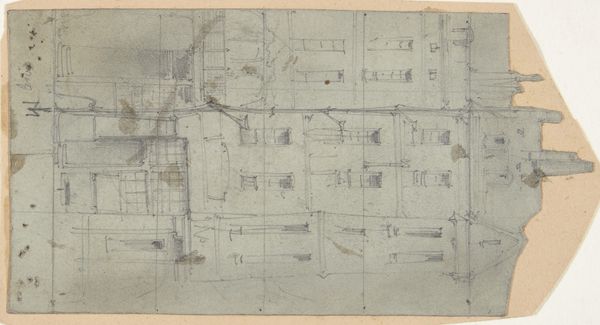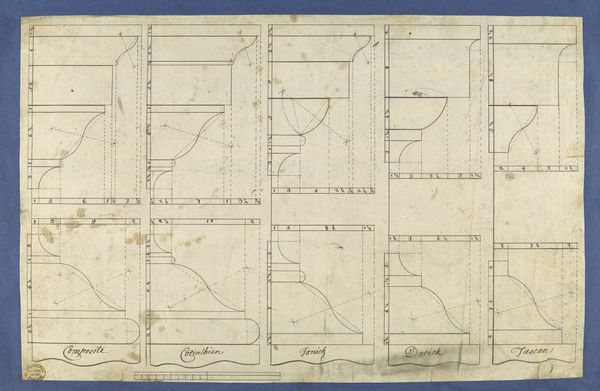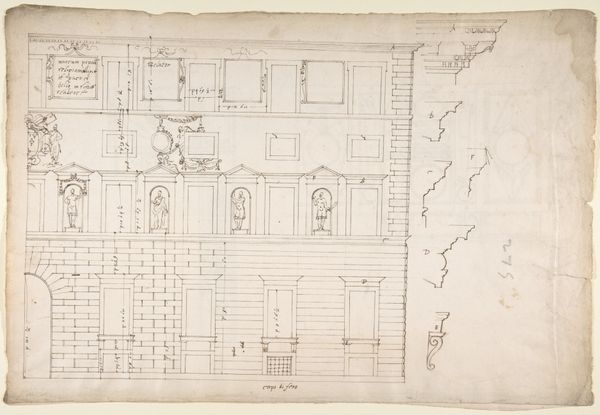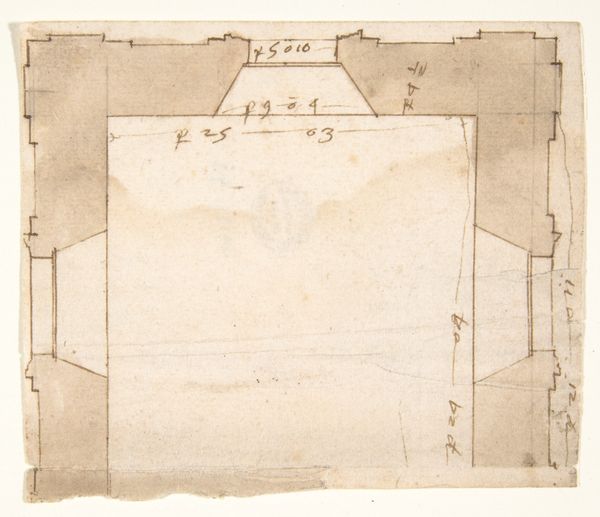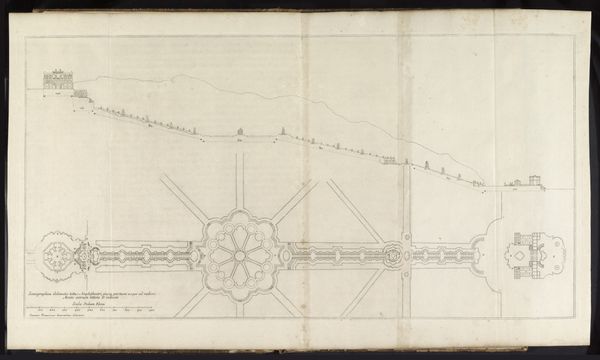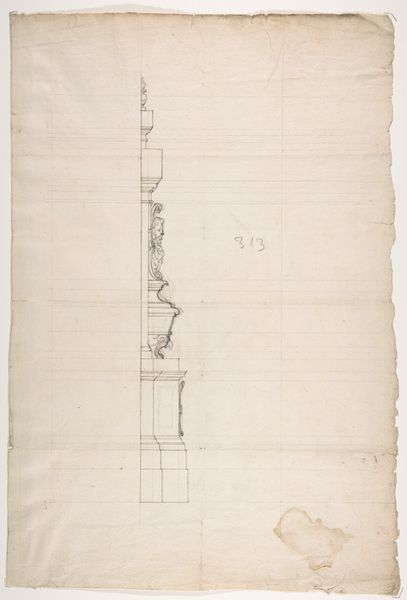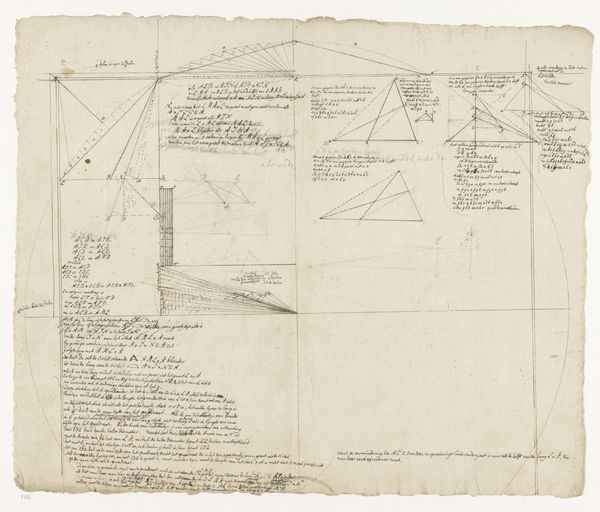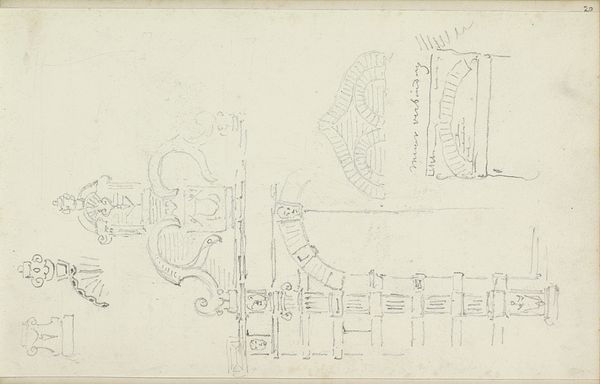
Forum of Nerva, colonnade, profiles of attic and entablature, architrave and column detail (recto) Arch of Constantine, plan (verso) 1500 - 1560
0:00
0:00
drawing, print, architecture
#
drawing
#
aged paper
#
toned paper
#
water colours
#
ink paper printed
# print
#
book
#
etching
#
tea stained
#
personal sketchbook
#
arch
#
watercolour bleed
#
sketchbook art
#
watercolor
#
architecture
Dimensions: sheet: 11 5/8 x 17 5/16 in. (29.5 x 44 cm)
Copyright: Public Domain
Editor: This is an intriguing page! It's a drawing from sometime between 1500 and 1560, a double-sided page showing studies of Roman architecture—the Forum of Nerva and the Arch of Constantine. It combines ink, watercolor and etching, it seems. What really grabs me is the almost technical precision of it – it feels very removed from traditional "art." How do you read this, given its almost utilitarian look? Curator: Utilitarian is a key word here. Before the advent of photography and precise mechanical reproduction, drawings like this were absolutely vital tools. These drawings weren't created as standalone works of "art", but rather as means for disseminating architectural knowledge. The print enabled the circulation of architectural knowledge, almost like blueprints but carrying an artisanal mark, wouldn't you say? Editor: I see your point. So, you're suggesting we consider the labor involved. Someone meticulously drafted this, essentially producing a kind of… architectural instruction manual. Curator: Exactly! Think of the process: the architect's vision, the drafter’s skill in rendering that vision, the production and then distribution. How does that redefine our understanding of "high art"? The "artist" is not simply inspired but is also a skilled artisan and the print enables a form of standardization in architecture and its teaching. The drawing also carries with it its unique water stains or paper inconsistencies as you see in this object. The toned and stained paper material contributes a feel and texture that a contemporary digital representation cannot fully capture. Editor: It makes me think differently about artistic skill and value. So much is involved, beyond just ‘inspiration’! Thanks for pointing that out! Curator: And thinking about materiality and production broadens our perspective, questioning those conventional boundaries!
Comments
No comments
Be the first to comment and join the conversation on the ultimate creative platform.
